Dried Scent Leaf
Original price was: ₦7,000.00.₦6,000.00Current price is: ₦6,000.00.
Dried scent leaf, also known as African basil or Ocimum gratissimum, is a cherished herb in West African cuisine and traditional medicine. With a pungent, clove-like aroma and slightly spicy flavor, it enriches soups, stews, and teas. Rich in vitamins A and C, calcium, and antioxidants, it supports digestive health, respiratory health, and immune function. Store in an airtight container in a cool, dark place for up to a year. Enjoy its unique taste and health benefits.
Description
Dried scent leaf, also known as African basil or Ocimum gratissimum, is an aromatic herb commonly used in West African cuisine and traditional medicine. It belongs to the Lamiaceae family, which includes other aromatic herbs like mint and basil. Here’s a comprehensive description of dried scent leaf:
Botanical and Common Names
- Scientific Name: Ocimum gratissimum
- Common Names: Scent leaf, African basil, Clove basil, Tree basil, Wild basil
- Local Names: Nchuanwu (Igbo), Efirin (Yoruba), Daidoya (Hausa)
Description
- Appearance:
- Fresh Leaves: The fresh leaves are dark green, oval-shaped, with serrated edges, and have a strong, pleasant aroma.
- Dried Leaves: When dried, the leaves become brittle, slightly curled, and retain a concentrated version of their aromatic scent.
- Flavor and Aroma: Dried scent leaf has a pungent, clove-like aroma with a hint of anise and peppery undertones. The flavor is robust and slightly spicy, making it a distinctive addition to dishes.
Nutritional Profile
While specific nutritional values can vary, dried scent leaves are known to be rich in:
- Vitamins: Vitamin A, Vitamin C, and some B vitamins.
- Minerals: Calcium, Iron, Potassium, Magnesium.
- Antioxidants: Polyphenols, flavonoids, and essential oils like eugenol, which contribute to its health benefits.
Uses in Cooking
- Culinary Uses:
- Soups and Stews: Dried scent leaves are commonly used in traditional West African soups and stews, such as pepper soup, ogbono soup, egusi soup, and banga soup.
- Seasoning: The leaves can be crushed or ground into a powder and used as a seasoning for meat, fish, and vegetable dishes.
- Teas and Infusions: Dried scent leaves can be brewed to make herbal teas that are both refreshing and medicinal.
- Condiments: It can be used in making sauces, dips, and as a garnish for various dishes.
Medicinal Uses and Health Benefits
Dried scent leaf has a long history of use in traditional medicine due to its numerous health benefits:
- Antimicrobial Properties: The essential oils in scent leaf, particularly eugenol, have antibacterial, antifungal, and antiviral properties. It’s often used to treat infections and as a natural preservative.
- Digestive Health: It helps in relieving stomach issues such as indigestion, bloating, and diarrhea. The leaf is also used to treat dysentery and other gastrointestinal disorders.
- Respiratory Health: Scent leaf is used to manage respiratory conditions like asthma, bronchitis, and coughs. The leaves can be boiled to make a steam inhalation or tea to relieve symptoms.
- Anti-Inflammatory and Pain Relief: The leaves contain compounds that have anti-inflammatory effects, which can help in reducing pain and swelling.
- Blood Sugar Regulation: Studies suggest that scent leaf may help in regulating blood sugar levels, making it beneficial for diabetics.
- Immune System Boost: Rich in antioxidants, scent leaf helps in boosting the immune system and protecting against oxidative stress.
Cultural Significance
- Culinary Heritage: Scent leaf is an integral part of the culinary traditions in many West African countries. It is often associated with home-cooked meals and traditional family recipes.
- Traditional Medicine: It is widely used in folk medicine for its healing properties. Herbalists and traditional healers incorporate scent leaf into various treatments for its effectiveness in addressing common ailments.
- Rituals and Ceremonies: In some cultures, scent leaf is used in rituals and ceremonies for its believed spiritual and protective properties.
Storage and Shelf Life
- Storage: Dried scent leaves should be stored in an airtight container, kept in a cool, dark place to preserve their flavor and potency.
- Shelf Life: When stored properly, dried scent leaves can last up to a year, though they are best used within six months for optimal flavor and medicinal benefits.
Sustainability and Cultivation
- Cultivation: Scent leaf is typically grown in tropical and subtropical regions. It prefers well-drained soil and can be cultivated in gardens, farms, or even pots.
- Harvesting: The leaves are harvested before the plant flowers, as this is when they are most flavorful and aromatic.
- Drying Process: After harvesting, the leaves are thoroughly washed and air-dried or dried in a dehydrator to retain their essential oils and nutritional content.
Additional information
| Weight | N/A |
|---|---|
| Package Size | 100g |

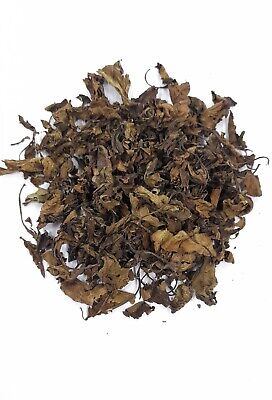
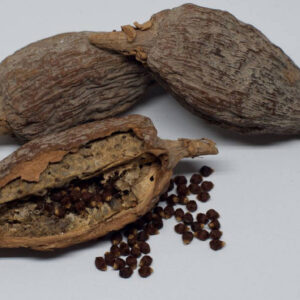
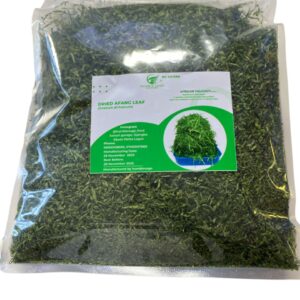
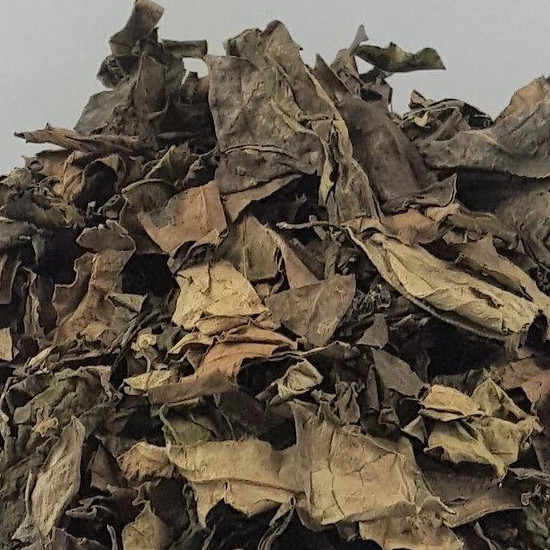
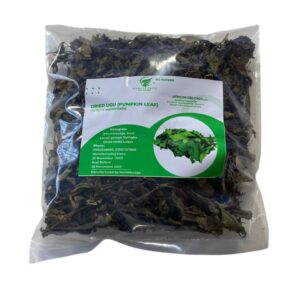
Reviews
There are no reviews yet.